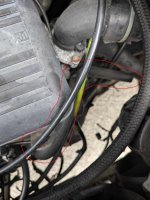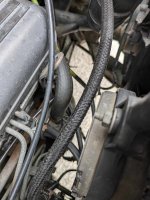Hi,
New owner of a 1992 Ducato - Hymer Camp motorhome.
It seems to run and drive fine but noticed that there's a random hose that's not connected as attached. It has been tucked out of the way but I'm not sure where it is supposed to go.
It's the 2.5td Sofim engine (although I'm not sure where the turbo on this sits; hard to tell it even has a turbo on a vehicle this old as it's still slow)
Hopefully not that important as I just drove 230 miles
New owner of a 1992 Ducato - Hymer Camp motorhome.
It seems to run and drive fine but noticed that there's a random hose that's not connected as attached. It has been tucked out of the way but I'm not sure where it is supposed to go.
It's the 2.5td Sofim engine (although I'm not sure where the turbo on this sits; hard to tell it even has a turbo on a vehicle this old as it's still slow)
Hopefully not that important as I just drove 230 miles







